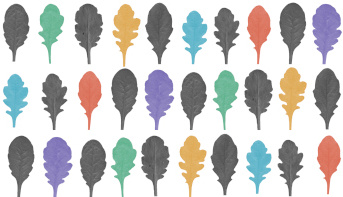A new role for microRNAs in plants: preserving leaf shape under epigenetic stress
Robustness is a fundamental property of living systems. It allows them, for example, to accumulate mutations without impacting development, creating a reservoir of diversity that evolution can exploit. Understanding the mechanisms underlying this robustness is therefore a major objective in the study of development and evolution.
In all plant species, the CUC2 gene plays a role in determining leaf shape. In the model plant Arabidopsis thaliana, this gene enables the formation of small teeth that are located at the leaf margins. When the gene is inactive, the leaf margins are smooth, whereas high activity results in the formation of large lobes. Thus, the activity of this gene must be finely regulated. Recent work by the "Transcription Factors and Architecture" FTA team, in collaboration with the "Epigenetics, Chromatin and Development" EPICDEV team of the "Reproduction and Plant Development" RDP laboratory, has shown that an epigenetic disturbance that increases CUC2 transcription does not lead to an increase in its protein level or altered leaf shape. This paradox is explained by the activation of a compensatory mechanism: in response to the epigenetic defect, a microRNA inhibits the excess mRNA produced, preventing overproduction of the CUC2 protein. This mechanism acts as a "genetic safety parachute." Interestingly, this parachute functions under various environmental conditions, although its size (the efficacy of the safety pathway) varies. This research thus reveals a new genetic mechanism that contributes to the robustness of plant development in response to major epigenetic disturbances.
Several questions emerge from this work
> Can this compensatory mechanism, activated by an epigenetic disturbance, also be triggered by other types of disturbances?
> More broadly, does it play a role in the developmental response of plants to environmental changes?
> Additionally, does this compensatory mechanism, demonstrated for the CUC2 gene, also exist for other genes?
Research developed at the Institute Jean-Pierre Bourgin for Plant Sciencess in collaboration.
Back

Légend: Rainbow leaves, scan of Arabidopsis leaves from different genotypes. Colors are artificial. Credit: Aude Maugarny
IJPB and BAP (Plant Biology and Breeding) INRAE Division Highlight
Référence:
Maugarny A, Vialette A, Adroher B, Sarthou A-S, Mathy-Franchet N, Azzopardi M, Nicolas A, Roudier F, and Laufs P.
MIR164B ensures robust Arabidopsis leaf development by compensating for compromised POLYCOMB REPRESSIVE COMPLEX2 function. Plant Cell. 2024.
doi :https://doi.org/10.1093/plcell/koae260
Contact:
Patrick Laufs, contact
IJPB team:
"Transcription Factors and Architecture" FTA